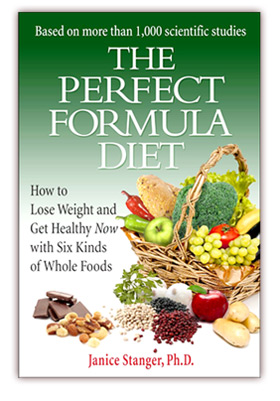
Both smoking and animal foods can damage your heart and the arteries that feed it. Whole plant foods nourish your heart. Should be a simple choice.
And Two Important Ways They Are Different
The Surgeon General’s December 2010 report, How Tobacco Smoke Causes Disease, is a gift for anyone interested in health. Of course, everyone knows that smoking is “bad.” This 727 page masterpiece vividly describes exactly how and why.
The Surgeon General has yet to release a report on the perils of animal foods. Yet compelling evidence shows striking similarities between smoking and eating meat, fish, dairy, and eggs. Here are twelve parallels between these dangerous habits.
1. Both smoking and animal foods damage your body through multiple mechanisms, including causing genetic changes, inflammation, and an increase in the free radicals that cause oxidative stress. Chronic illnesses, including cancer, cardiovascular disease, reproductive problems, and aggravation of diabetes are the inevitable result.
2. Industry rejects responsibility for the harm it causes in the face of overwhelming evidence. The tobacco, meat, and dairy industries deny their products are hazardous for as long as possible. These corporations blame heredity and every other theory they can fabricate for the effects of their deadly offerings. Tobacco companies have battled every legal attempt to hold them accountable for creating and marketing a deadly product. Now that lawsuits are threatening fast food giants, those companies are reacting the same way.
3. Both the tobacco and animal foods industries sponsor phony “research” and bash outspoken critics with every weapon money can

Both smoking and animal foods increase your risk of heading in this direction. You can head for the produce aisle instead.
buy. Potential critics are kept in line with strategies such as industry-provided research grants, opportunities to speak at conferences or publish papers, peer pressure, and fear of the personal attacks they witness against others.
4. Both tobacco and animal food industy associations manufacture controversy for their own gain. These corporations overemphasize irrelevant data or tiny discrepancies between studies to manufacture doubt out of scientific certainty. The industry mantra is that there are “two sides,” so the media need to be “balanced and fair.” Consumers, who lack the time and expertise to read and evaluate hundreds of studies, are understandably confused about findings that are actually crystal clear.
5. Techniques used to sell cigarettes and animal foods are startlingly similar, appealing to style and emotion rather than real benefits. The early cigarette industry used collectible cards to sell their product, just as the fast food industry today uses toys to lure young children. The Marlboro Man promoted image and lifestyle, just as the milk moustache does.
6. The tobacco and animal foods industries cultivate a cozy relationship with the government agencies that are supposed to regulate them. The result is lack of effective regulation and a public health nightmare. Even in the nineteenth century, many people realized cigarettes were a health hazard. In 1916, Henry Ford vowed not to hire smokers. Yet the first Surgeon General report on smoking’s dangers was not issued until 1964. In parallel, the US Department of Agriculture actually promotes unhealthy animal foods, which are fed even to poor children who have no other choice of what to eat.
7. Both the tobacco and animal foods industries make their products cheap and easy to get as possible. For decades, farm subsidies helped tobacco growers. Meat and dairy are beneficiaries of billions in government subsidies to keep prices artificially low at taxpayers’ expense.
8. In World War I, cigarettes gained a strong patriotic seal of approval as part of the war effort. This image of cigarettes as part of the American way of life persisted for decades. Similarly, consuming meat and dairy has a patriotic aura. National holidays, including the Fourth of July, Labor Day, and Memorial Day, are all celebrated with barbeques.
9. Smoking and animal foods are both addictive. The new Surgeon General’s report spends considerable focus on the addictive

After you have been on a whole foods, plant-based diet for a while, eating nature's finest offerings and waking up your tastebuds to how great food can be, your perceptions will change. Animal foods will start to look about as appealing as these cigarette butts do.
aspects of smoking and the deliberate product manipulations to keep cigarettes as addictive as possible. Cheese is probably the most physically addictive animal food, although fortunately not as difficult to withdraw from as nicotine is.
10. Consumers smoke and eat meat despite the known risks. People are under the illusion they are making their own choices when they do this. Yet, as pointed out above, powerful industry and government campaigns make these behaviors appear way more attractive than they really are. The industries also promote supposedly safer versions of their products, such as filtered cigarettes and nonfat cheese. These products have no proven health benefits, but their image puts consumers at ease.
11. Both the tobacco and animal foods industries push their poisonous products worldwide when the news starts to get out at home. Other countries are a safe haven and a source of tremendous profit as deadly habits are exported.
12. Tobaccco and animal foods are poisonous to others and the planet as well as individuals who use them. Secondhand smoke is deadly and cigarette smoke and butts poison the air and water. Raising animals for food causes massive air and water pollution. Giving antibiotics liberally to factory farmed animals is impairing the ability of these drugs to cure infections in humans.
For all these similarities, the animal foods industry enjoys two benefits today that tobacco companies would love to have, but don’t. First, smoking is now marginalized and attacked by schools, at least some branches of government, and celebrities. Yet eating animal foods still has the seal of approval and celebrities feel no shame in acceoting money to endorse cow’s milk.
Second, way more of the population eats meat and dairy than smokes. This was true even in smoking’s heyday. It’s tough to make yourself see the hazards in a product used every day. Consumers take animal foods for granted, seldom even thinking about truly healthy diet alternatives. Even scientists and physicians get caught in this trap.
To thoroughly explore these parallels would require a book. Read the Surgeon General’s December 2010 report for consumers on smoking. This is a short summary of the full report, written in clear language. Then read a good book on whole foods, plant-based nutrition. You’ll gain more insight into the lists here, and maybe you’ll be inspired to make new choices. Reject tobacco. Reject animal foods. Success can be yours on a whole foods, plant-based diet.
Intrigued? Now you can use our Whole Foods Blog Finder to target informative, fun postings on plant-based nutrition. Quick information at no cost!
Blog posting by Janice Stanger, Ph.D. Janice authored The Perfect Formula Diet, the smart person’s nutrition book built on sustainable food choices. Enjoy six kinds of whole foods for permanent, hunger-free weight loss and health.
Tags: cardiovascular disease, cigarettes, getting healthy, inflammation, nutrition facts, Plant-based nutrition, reverse chronic disease, Surgeon General's report, tobacco, whole foods





The government support of the animal foods industry with our money is despicable! A pound of ground beef is usually cheaper than a pound of tomatoes (definitely cheaper than organically grown tomatoes). The beef production is poisoning our air and water supplies. The toxic products are clogging our health care system with sick people, suffering from avoidable aliments. This is a classic case of taxation without representation. We have very little choice of how our government squanders our money on worthless products.